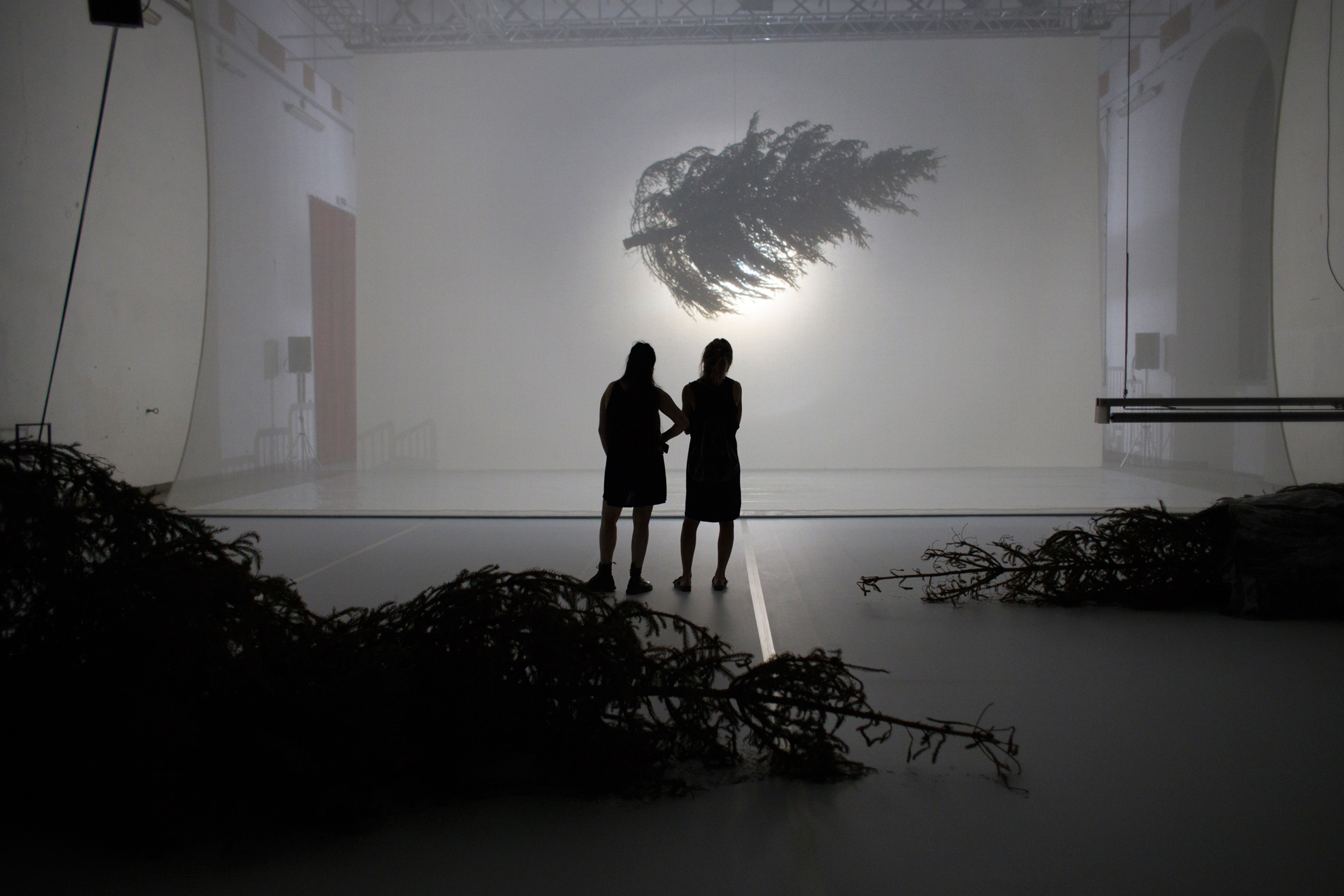content
Catastrophe is a word related to Greek tragedy, indicating the reversal of the story that dissolves the plot and leads to catharsis. If in Greek tragedy the human arrogance, which leads to catastrophe, is declined towards the divine, in 19 JULY 1985 the human hýbris is accomplished towards the alpine landscape. Here the catastrophe is literal; it is the reversal of the whitish mud deposited in the sedimentation basins that swept away the Stava Valley. The void, left by the mudflow, materializes the unrepresentability of this tragedy. The only possibility is the chorus as, since the Greek tragedy, it is a declaration of war against naturalism in art. Within this battle, 19 JULY 1985 becomes a tragedy unfolding in space rather than time; an installation for Centrale Fies. The scenery deconstructs itself in infinite directions and crystallizes its movements by freezing them in the initial and final instant. The choir becomes a spectre singing Lux Aeterna, whose musical canons are modulated in dissonant rhythms and tempo becoming a very dense sound mass without a clear direction, just like the mudflow: very dense and without a clear direction.
year
2020
running time
0:40:00.0 in loop
genre
Performative installation
press
La Lettura, Corriere della Sera > Le colpe dell'uomo non della natura - 11.X.2020
Verba Manent > Come si racconta una strage - 10.X.2020
radio3 suite > 19 luglio 1985 - 03.X.2020
Radio Vaticana > Tredici e Tredici - 02.X.2020
articolo21.org > Teatro Argentina. 19 luglio 1985 - 28.IX.2020
teatro.it > 19 luglio 1985, una tragedia alpina rievocata da OHT - 17.IX.2020
Messaggero Veneto > L'inondazione nel 1985 a Stava - 12.IX.2020
sipario > L'edizione XL di Dro - 17.IX.2020
minima et moralia > Il teatro e il COVID - 25.VIII.2020
Persinsala > XL Centrale Fies / Chapter 4 - 20.VIII.20
ATP diary > Anagoor e OHT per XL a Centrale Fies - 13.VIII.2020
minima et moralia > XL Centrale Fies: at the mercy of nature - 31.VII.2020
Stratagemmi > 19 LUGLIO 1985. Una tragedia alpina - 18.XI.19
Teatro e Critica > 19 luglio 1985. Alle ore 12:22, una tragedia alpina - 13.XI.2019
il Trentino > Il teatro deve lavorare sulle nostre ferite aperte - 10.XI.2019
l'Adige > Stava, una tragedia universale - 10.XI.2019
il Dolomiti > Dal teatro in apnea lo spettatore esce cercando aria - 8.XI.2019
la Voce del Trentino > 19 luglio 1985: al Teatro sociale il grido silenzioso di Stava - 8.XI.2019
Corriere della Sera - Trentino > Stava, 18 luglio 1985 - 18.X.2019
l'Adige > Stava, una tragedia alpina - 18.X.2019
credits
19 JULY 1985
an Alpine tragedy
> installation by OHT | Office for a Human Theatre
> “Lux Aeterna” by György Sándor Ligeti
> “Again – after ecclesiastes” by David Lang
> “ndormenzete popin” Mountain chant
> directing, set-design and text Filippo Andreatta
> dramaturgy Marco Bernardi
> coripheus, music and sound Davide Tomat
> set-design and construction Alberto Favretto
> light-design William Trentini
> stage-manager Viviana Rella
> best-girl Letizia Paternieri
> assistent director Veronica Franchi
> video Armin Ferrari
> producer and administrator Laura Marinelli
> promotion and curating Laura Artoni
> expert gardener Cleto Matteotti
> sound technician Claudio Tortorici
> electronic development and automation Enrico Wiltch
> animal spirit the Deer
> production OHT
> co-production Romaeuropa Festival, Centro Santa Chiara Trento
> artistic residency Centrale Fies art work space
> supported by Fondazione Caritro, Provincia Autonoma di Trento
> under the patronage of Fondazione Stava 1985
> installation version co-produced by Centrale Fies art work space
production history
from 17.VII.20 to 08.VIII.2020 > Dro, Centrale Fies
number of replica
40









